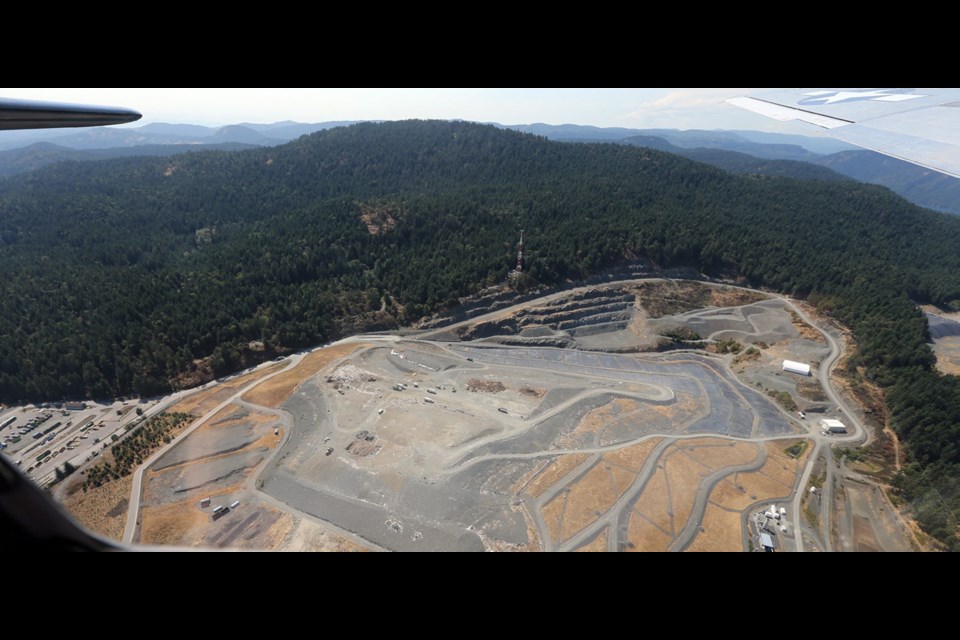With millions of dollars of taxpayer money at stake, Capital Regional District directors expressed frustration this week at their lack of control over the CRD’s $765-million sewage treatment plan.
The province last year appointed an independent project board to take over the mega-project due to the CRD’s inability to come up with a plan.
Saanich Mayor Richard Atwell told directors that the CRD board had “handcuffed” itself by agreeing to turn the project over to the project board.
The flashpoint for his frustration was the project board’s proposal to deal with sewage sludge, the leftovers from sewage treatment. The provincially approved plan calls for sewage sludge to be piped about 18 kilometres from the plant to be built at McLoughlin Point to Hartland Landfill.
At Hartland, the sludge is to be processed into what are known as Class A biosolids, a soil supplement, using micro-organisms to break down organic matter through anaerobic digestion. Initially, the biosolids are to be stored at Hartland while the CRD develops a plan for their beneficial use.
The budget for sludge treatment is $189 million (plus conveyancing). The project board has a short list of three companies vying to do the work.
Meanwhile, the CRD board has been talking with companies that are interested in integrated resource management — mixing sewage sludge with solid wastes such as food scraps and processing the mixture to create revenue by generating electricity.
At least 10 companies have expressed interest, and some of those are reportedly prepared to use raw sludge for their processes at costs in the range of $30 million to $40 million — far less than the $189 million the project board is budgeting for sludge processing.
Atwell and Metchosin Mayor John Ranns have said it makes no sense to spend $200 million on an anaerobic digester that might ultimately not be needed.
But in a letter to directors, CRD chief administrator Bob Lapham, a project board member, said integrated resource management is not part of the provincially approved liquid waste management plan and that changes to include it at this point could jeopardize funding agreements with senior governments.
“I’m far more concerned about saving our taxpayers money than worrying about even $40 million of funding that we may not even need because we don’t have to spend $200 million,” Atwell said.
“I cannot sit here with good conscience and vote this forward. We need to start thinking about this instead of just passing papers around. It’s doing a disservice to our residents, and I’m disgusted by it.”
Lapham said the CRD’s solid waste program, not sewage treatment, should drive the integrated resource management process.
“Biosolids [sludge] comprise only a small proportion of the total combined biosolids, organics and municipal solid waste streams that must be integrated to create an effective [integrated resource management] plan,” Lapham’s letter said. “As a result, the potential for [integrated resource management] in the core area will be predominantly driven by the solid waste streams.”
CRD directors face a May 31 deadline to forward an integrated resource management work plan to the province as part of its sewage treatment plan approval.
Victoria Mayor Lisa Helps, the sewage committee chairwoman, argued the one-page document is simply a “placeholder” — but one that is a condition of senior government funding for the project.
“What we’re sending into the province is a one-page chart with very little detail. It’s a placeholder, and I would really encourage us to send this placeholder into the province,” she said.
Ranns disagreed: “What we’re saying if we advance this happy little graph on one page is that we are endorsing the project management board’s process and we are excluding the ability to be able to examine a huge cost to the taxpayer.”



